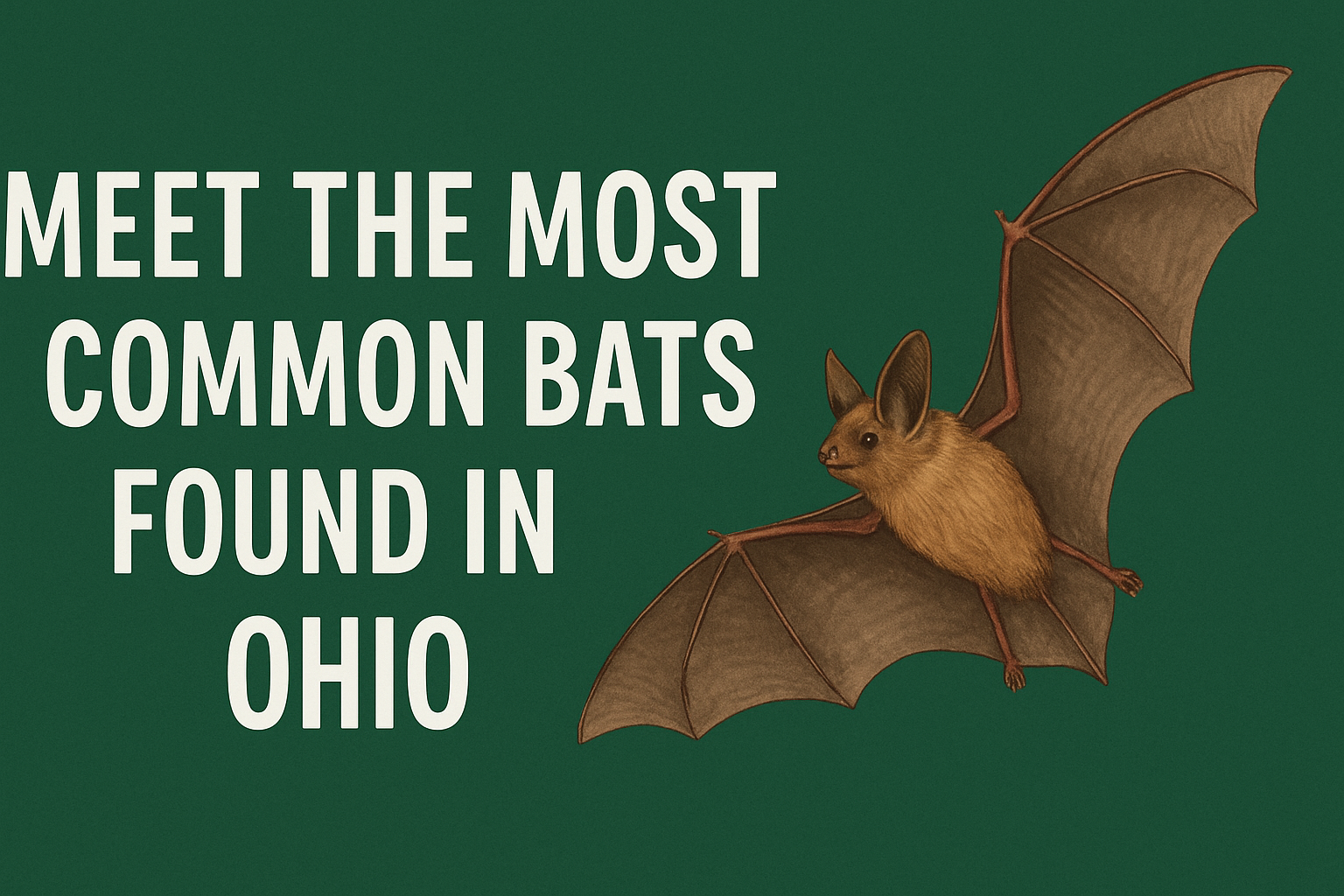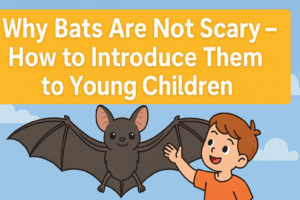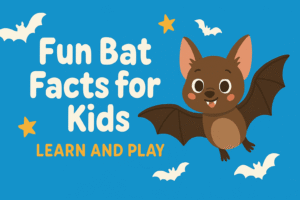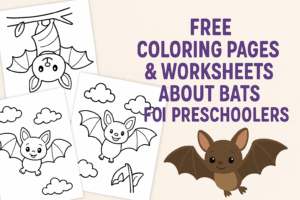You’ve probably seen them before—darting through the sky just after sunset, zipping like tiny shadows across your backyard. Maybe you thought they were birds. Or bugs. Or just… weird little blurs.
But surprise: those aerial acrobats are bats, and if you’re in Ohio, you’re sharing your neighborhood with some pretty fascinating ones.
So today, we’re going full Bat-Mode. Not on Gotham City vibes—but on real, native, unsung species of Ohio that don’t wear capes but do a whole lot of good behind the scenes.
Let’s meet Ohio’s most common bats—get ready for some serious respect for these night-flying MVPs.
1. Little Brown Bat (Myotis lucifugus)
Nickname: The mosquito assassin
Why it’s cool:
These are some of the most common bats in Ohio and across North America—although sadly, their populations have been devastated by White-Nose Syndrome in the last decade.
What they look like:
- Tiny (about 3–4 inches long)
- Glossy brown fur
- Short ears and a cute squished-in face
Superpower:
They can eat their body weight in insects every night. That’s like you eating 80 pizzas before bed.
Where you’ll find them:
Forests, barns, attics, bat boxes… anywhere with access to water and lots of bugs.
2. Big Brown Bat (Eptesicus fuscus)
Nickname: The suburban bat
Why it’s cool:
It’s one of the most commonly seen bats in Ohio because they’re totally cool with humans. You’ll often find them roosting in buildings, old houses, or barns.
What they look like:
- Bigger than little browns (duh)
- About 4–5 inches long
- Chocolate-brown fur
- Heavy-duty jaws (great for crunching beetles)
Superpower:
Can survive Ohio winters by hibernating in walls, caves, or even your garage. Seriously, they are survivalists.
Where you’ll find them:
Everywhere—from rural fields to city backyards. They’re the generalists of the bat world.
3. Eastern Red Bat (Lasiurus borealis)
Nickname: The fall foliage twin
Why it’s cool:
This bat is a stunner. With fur the color of autumn leaves, it actually blends into trees during the day—like, leaf-level camouflage.
What they look like:
- Reddish-orange fur (more vivid in males)
- White “frosted” tips on their fur
- Fluffy, round, and straight-up adorable
Superpower:
Roosts in trees during the day by hanging from one foot—so it sways like a leaf in the breeze.
Where you’ll find them:
Wooded areas and forest edges. They’re more solitary, unlike the “house party” style of little and big browns.
4. Hoary Bat (Lasiurus cinereus)
Nickname: The solo traveler
Why it’s cool:
It’s the largest bat species in Ohio and one of the most majestic. Plus, it’s got this frosty, silver-furred vibe that makes it look like a wise forest wizard.
What they look like:
- 5–6 inches long
- Thick, dark fur with white tips = “hoary” or frosted appearance
- Wingspan up to 16 inches (!!)
Superpower:
This one’s a long-distance flyer. It migrates south in the winter—like a tiny, furry snowbird.
Where you’ll find them:
Usually flying high above treetops. Harder to spot, but totally worth it when you do.
5. Tri-Colored Bat (Perimyotis subflavus)
Nickname: The pastel puff
Why it’s cool:
This one’s named for its three-colored fur—each strand of hair goes from dark to yellow to light brown. It’s like ombré fur. Seriously.
What they look like:
- Small (similar to the little brown bat)
- Tiny, delicate build
- Soft fur with layered colors
Superpower:
One of the first bats to emerge at dusk—so if you’re doing sunset yoga or sipping a patio drink, they might be your first winged visitor.
Where you’ll find them:
Heavily wooded areas and near water. They hibernate in caves during the winter.
6. Silver-Haired Bat (Lasionycteris noctivagans)
Nickname: The velvet ghost
Why it’s cool:
This bat is sleek. It’s got this dark fur edged with silvery highlights, which kind of gives it a “bat wearing a tuxedo” energy. Fancy, but low-key.
What they look like:
- Medium-sized
- Blackish fur with silvery frosting
- Short, rounded ears
Superpower:
It’s a slow flyer, but super stealthy. Perfect for sneaking up on moths. Also migrates south in winter.
Where you’ll find them:
Forests and parks with tall trees—especially during migration seasons.
Bonus: Rafinesque’s Big-Eared Bat (Corynorhinus rafinesquii)
Nickname: The floppy-eared legend (rare)
Why it’s cool:
Not common in Ohio, but worth mentioning because those ears are WILD. Like, Dumbo-level. Plus, their numbers are super low, and they’re considered endangered in some regions.
Where you might (rarely) find them:
Heavily wooded swamps and bottomland forests in southern Ohio. But you’d be lucky to spot one.
Why It Matters to Know Your Neighborhood Bats
Let’s be honest—most people think of bats and immediately picture:
- Dracula
- Rabies
- Or the Bat-Signal
But knowing the real, local species in your own state helps you appreciate how much these animals do for us every single night.
They eat pests.
They help plants grow.
They support entire ecosystems.
And they’re in trouble—especially from diseases like White-Nose Syndrome and habitat destruction.
Quick Tips for Being a Bat Ally in Ohio:
- Install a bat house: Big brown bats love ‘em
- Keep dead trees (snags) if safe: Tree roosts are valuable real estate
- Limit pesticide use: Bats need bugs, not poison
- Plant night-blooming flowers: Attract the insects that attract bats
- Support local conservation groups: Like Ohio Bat Working Group or regional wildlife centers
TL;DR – Meet Ohio’s Bat All-Stars:
| Bat | Size | Fun Fact |
|---|---|---|
| Little Brown Bat | Tiny | Insect-eating MVP, endangered by WNS |
| Big Brown Bat | Medium | Suburban superstar, often roosts in homes |
| Eastern Red Bat | Small–Medium | Camouflaged in trees, looks like autumn leaves |
| Hoary Bat | Large | Long-distance migrator, frosted fur |
| Tri-Colored Bat | Tiny | Has ombré fur, first to emerge at dusk |
| Silver-Haired Bat | Medium | Velvet ghost, migrates and prefers forests |
| Rafinesque’s Big-Eared | Rare | Huge ears, endangered, lives in swampy areas |
So next time you’re outside at dusk, look up and give a little wave (or at least a respectful nod) to the bats flying overhead. They’re not just part of nature’s background—they’re key players in keeping your world healthy, balanced, and buzzing with life.
Let’s show Ohio’s bats a little love.
Want to attract bats to your backyard or learn more about bat-friendly gardening? Drop a comment or reach out—I’ve got tips, tricks, and a mild obsession with bat boxes.




